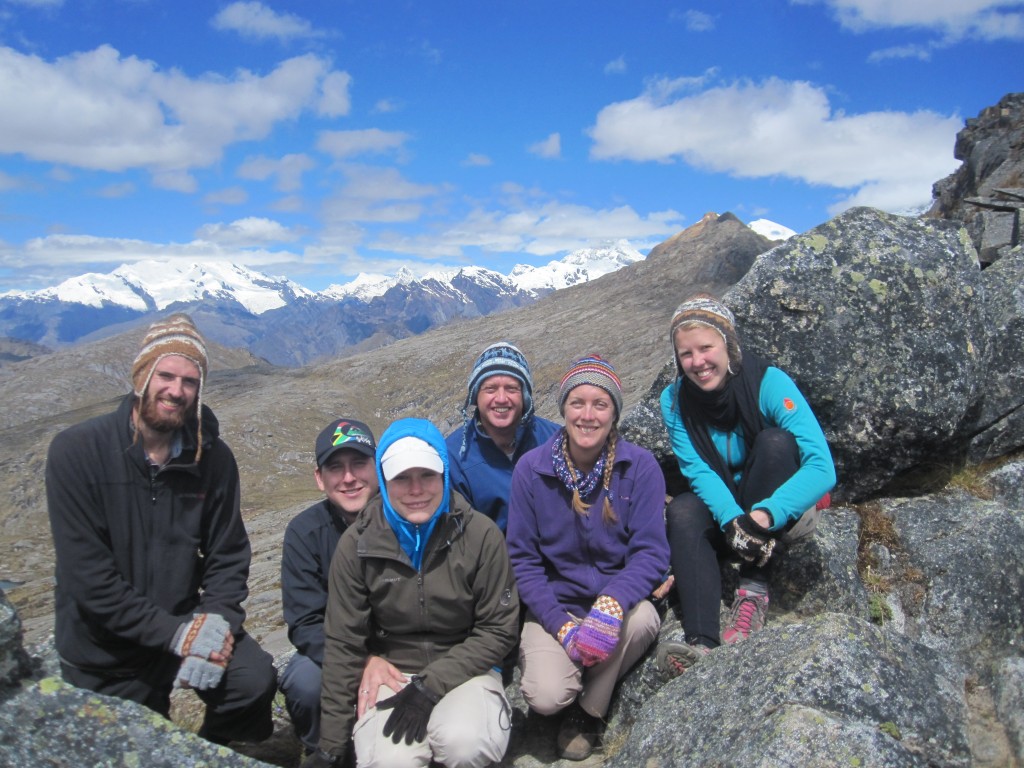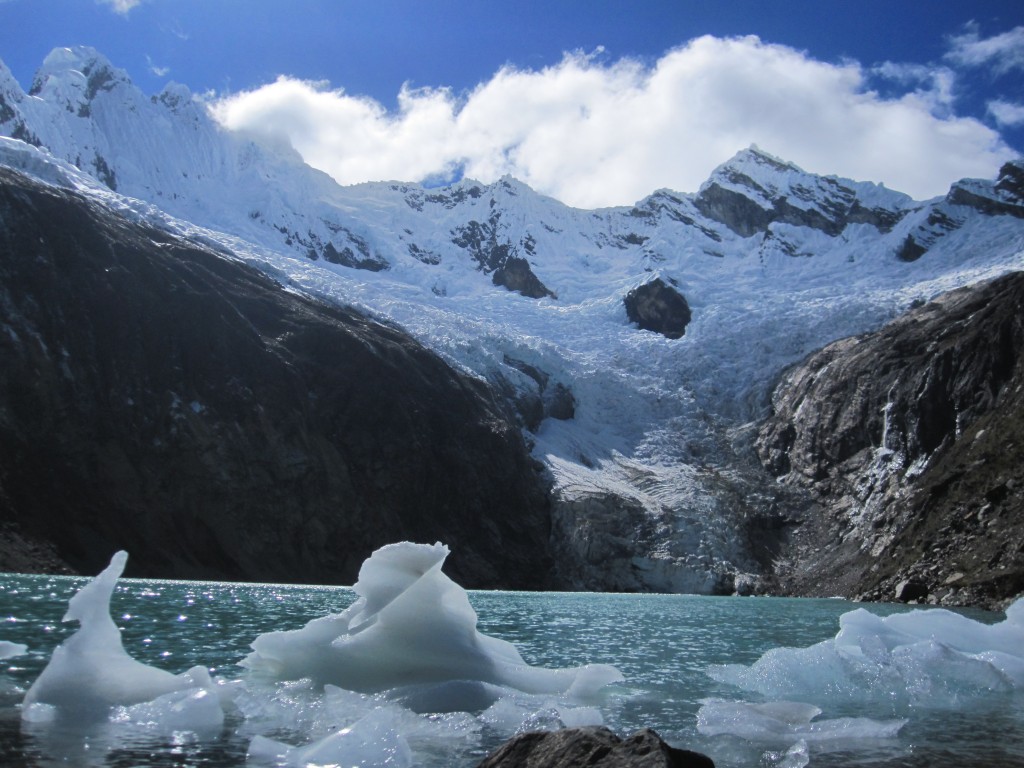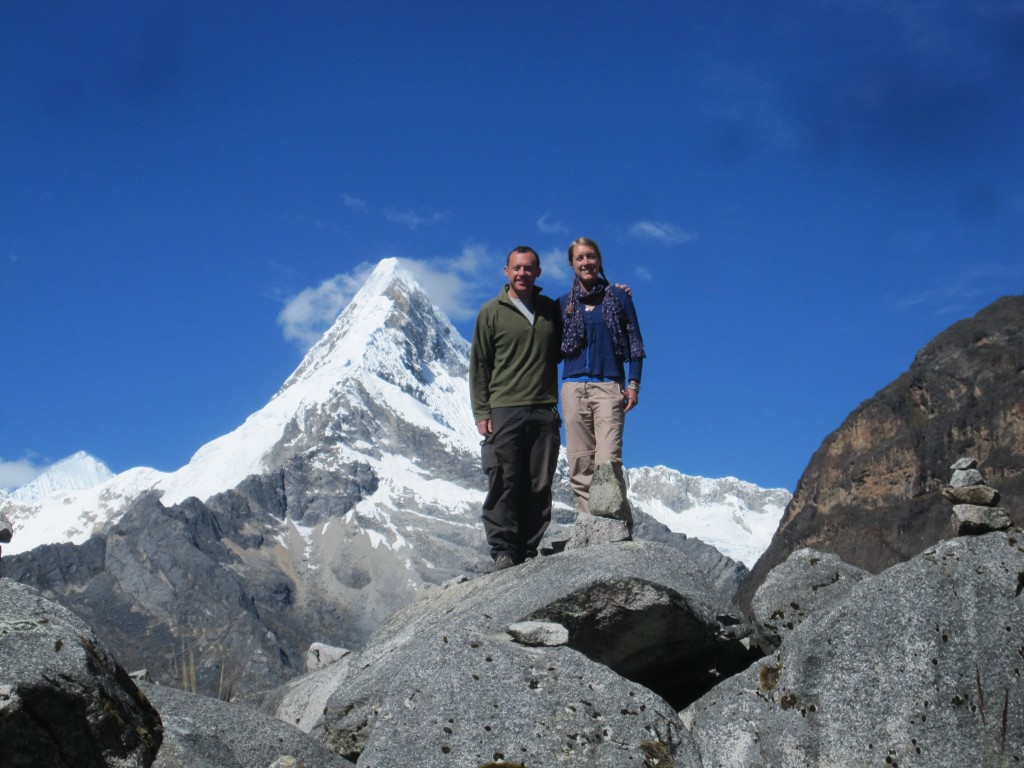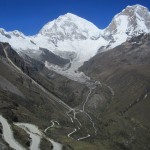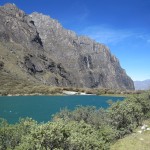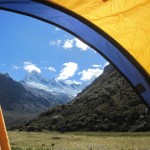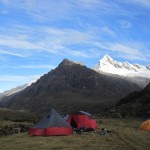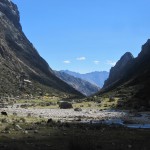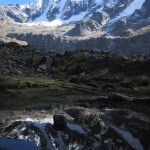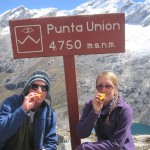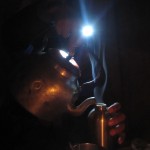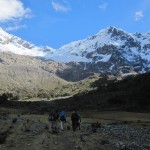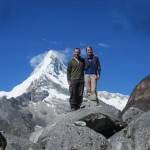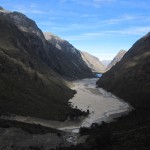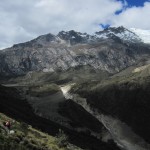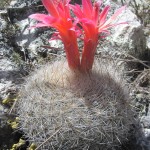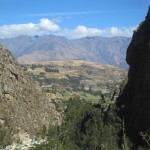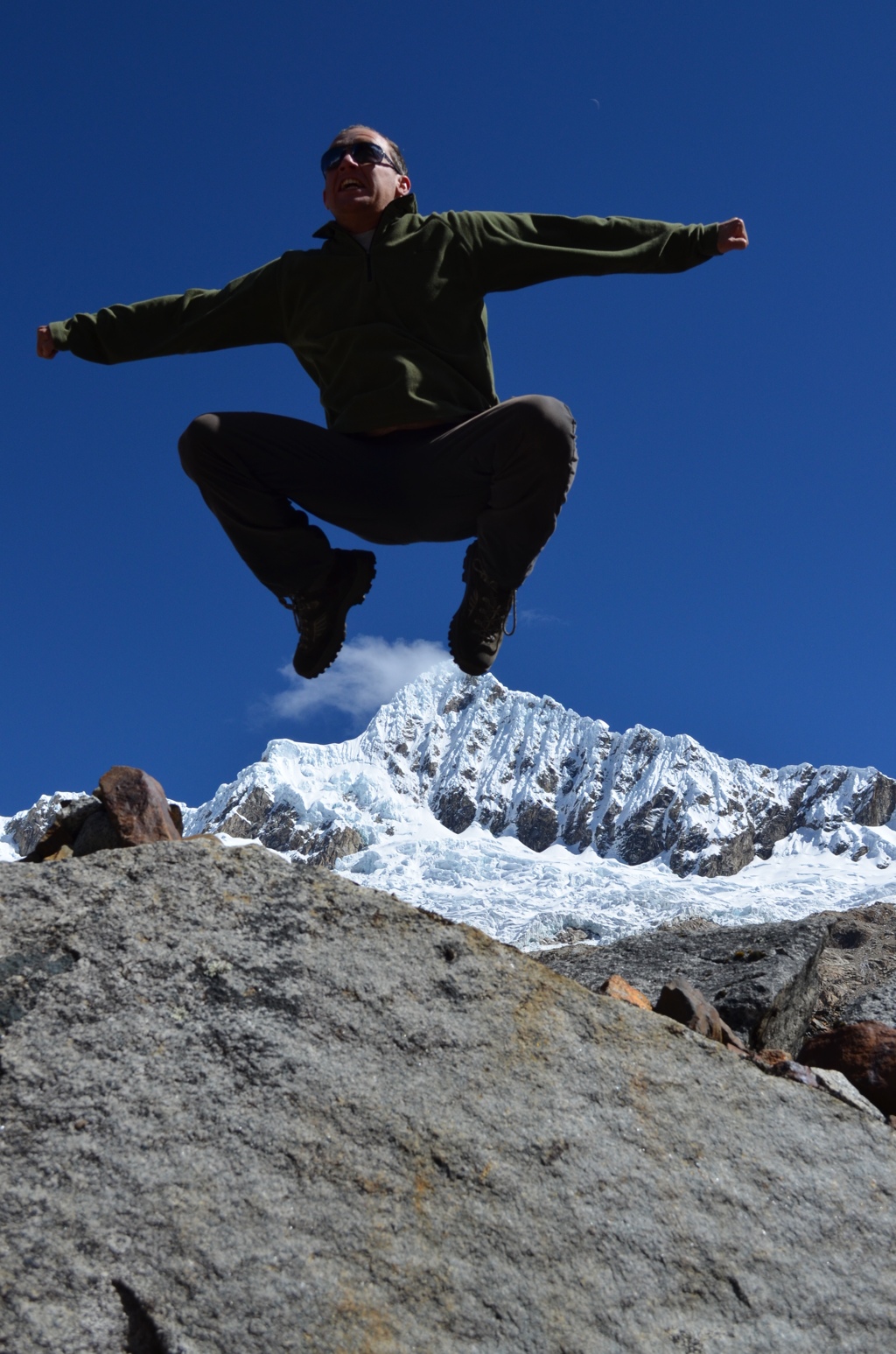With only a few days left here in Peru, we ventured to Huaraz for some trekking in the Andes. The town itself is mainly concrete after the destruction of many earthquakes, but the surroundings are spectacular – imposing rocky ridges with white peaks all around.
We did the ‘Santa Cruz’ trek, the same route I did with Roland 10 years ago (although proudly then we did it with just a guide and a couple of tents, no donkeys, chairs and tables as are the order of the day now). It’s four days of decent trekking, with camping in beautiful but sub-zero temperatures in the valleys each night.
Along the way we took in sparkling blue glacial pools (with freshly minted icebergs), a ridge at 4750m just below the snow line, and also the destructive power of nature. When I was last here, there was a striking arid valley running for 20km leading up to the ridge. A landslide earlier this year tore down the hillside and for miles down the valley, coating everything with a thick bed of sand. It’a a bit eerie looking up at the mountain above you to see an obvious gap and the rubble and sand surrounding you, especially since this was all so memorable when I was here not all that long ago (in geological terms, anyway!).
There is another aspect to this landscape that has stuck with me strongly since our last visit: the haunting tale of the 1970 earthquake that wrought destruction on much of Peru and particularly the town of Yungay, which we passed at the start of the trek. The 7.9 quake dislodged part the top of Mount Huascarán, the highest mountain in the country. As the mass of rock and ice continued downhill, it picked up part of a glacier, and as it neared the valley bottom at around 300km/h, it was some 80 million cubic metres in size. The towns in its path were completely wiped out, killing 25000 people in Yungay alone. It is a haunting experience even now driving through the valley which is littered with boulders the size of 5 story houses. And the good side to this story that I remember dearly? On the day of the quake, a local circus was holding a free day for children. Some 300 of them were attending in the local stadium and as a result survived, having been led to safer ground pied-piper style by a clown after the earthquake. When you think about it, it isn’t hard to see why the Incas thought the mountains were the incarnations of gods looking over them.
Simon
- The road to the start of the trek
- Blue lake
- Stark mountains
- Doesn´t get much better than this!
- Sunset
- Our campsite for the night
- Our donkeys nuzzling one another
- Donkeys carrying belongings up the trail
- Paper bark tree – common at altitude as the bark protects the tree
- Camping in the valley
- Beautiful!
- Heading on up to the pass
- The group of us at the pass
- Mountains in lakes
- Looking back into the valley we´d just walked up
- Glacial lake and snow at the pass
- Kazoos at the pass
- We walked down there
- Our guide pouring out boiling water on a freezing night
- Walking up to a glacial lake
- A hairy plant against the sky
- Icebergs in the glacial lake
- My, we´re tall!
- Me trying to jump over Alpamayo, ‘The most beautiful mountain in the world’
- The valley after the landslide, in sandy yellow
- That´s where it all came from
- Morning reflections on the river
- Ice crystals on the rocks
- Cute!
- Cows grazing on the dusty landslide, a dust storm kicking up, and snow capped peaks beyond
- The end of the valley, at the end of the trek

